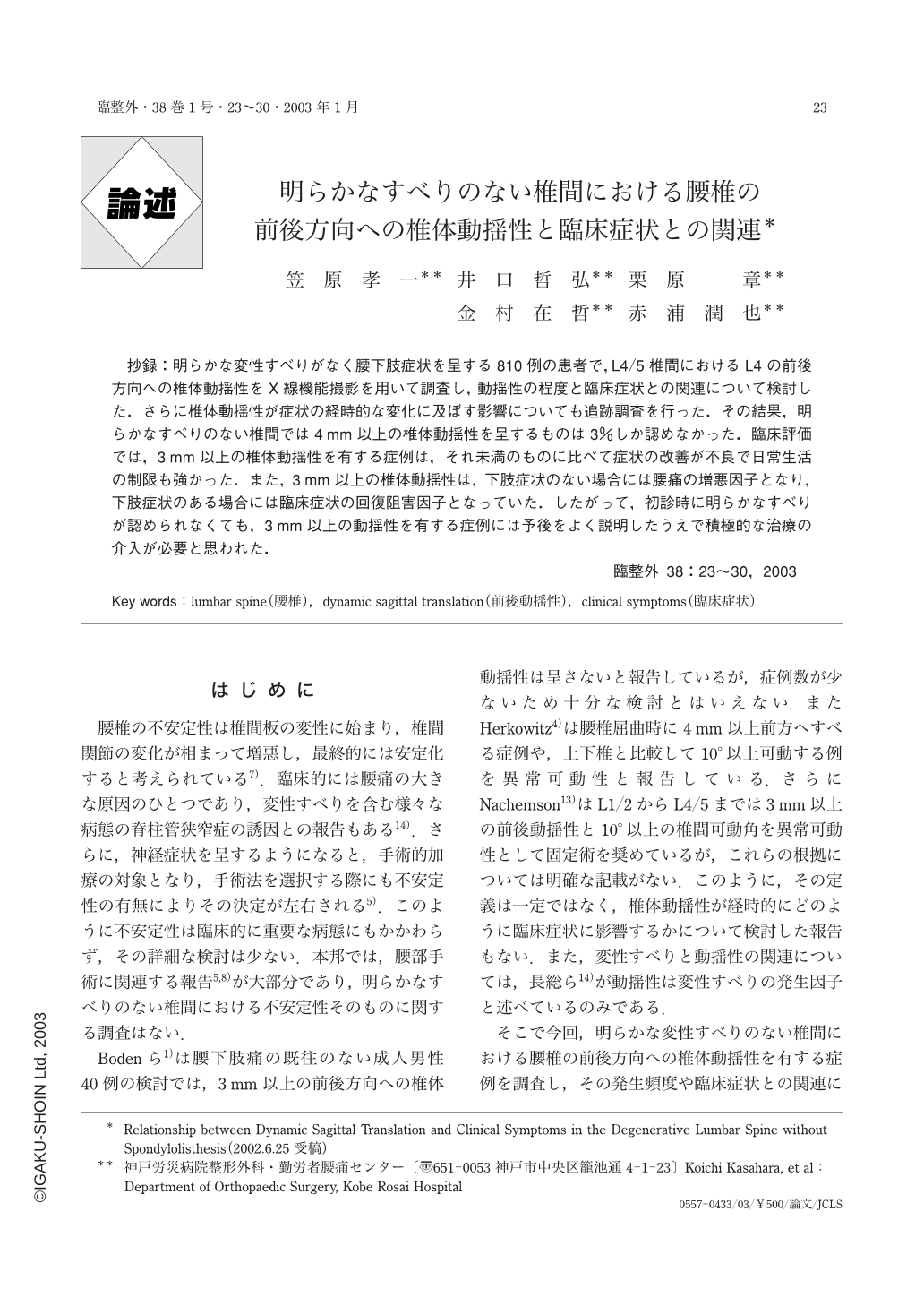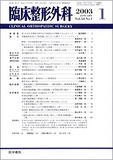Japanese
English
- 有料閲覧
- Abstract 文献概要
- 1ページ目 Look Inside
抄録:明らかな変性すべりがなく腰下肢症状を呈する810例の患者で,L4/5椎間におけるL4の前後方向への椎体動揺性をX線機能撮影を用いて調査し,動揺性の程度と臨床症状との関連について検討した.さらに椎体動揺性が症状の経時的な変化に及ぼす影響についても追跡調査を行った.その結果,明らかなすべりのない椎間では4mm以上の椎体動揺性を呈するものは3%しか認めなかった.臨床評価では,3mm以上の椎体動揺性を有する症例は,それ未満のものに比べて症状の改善が不良で日常生活の制限も強かった.また,3mm以上の椎体動揺性は,下肢症状のない場合には腰痛の増悪因子となり,下肢症状のある場合には臨床症状の回復阻害因子となっていた.したがって,初診時に明らかなすべりが認められなくても,3mm以上の動揺性を有する症例には予後をよく説明したうえで積極的な治療の介入が必要と思われた.
The relationship between clinical symptoms and amount of sagittal translation of L4 on L5 was examined in 810 patients with low back pain and/or leg pain and without degenerative spondylolisthesis of 3mm or more. Assessments were conducted at the initial visit and at a follow-up examination (average interval:4.6 years). Clinical symptoms were assessed by means of the JOA score, and sagittal translation was measured by the method of White and Panjabi on flexion-extension films. Only 3% of the patients, exhibited translation of 4mm or more, and the percentage of patients exhibiting translation between 3mm and 4mm was 9.9%, with a smaller proportion of patients with excessive translation in the outpatients cohort. According to the clinical results, the patients with more than 3mm translation had significantly poorer symptoms improvement and their ADL was more limited than in those with less than 3mm translation. The results also revealed that when patients had no lower leg symptoms, the excessive translation was a factor that made their low back pain worse, and that when they had leg pain, the excessive movement impeded the resolution of their symptoms. The results suggested that more aggressive conservative intervention with informed consent is necessary in outpatients with 3mm or more translation on the initial visit.

Copyright © 2003, Igaku-Shoin Ltd. All rights reserved.


